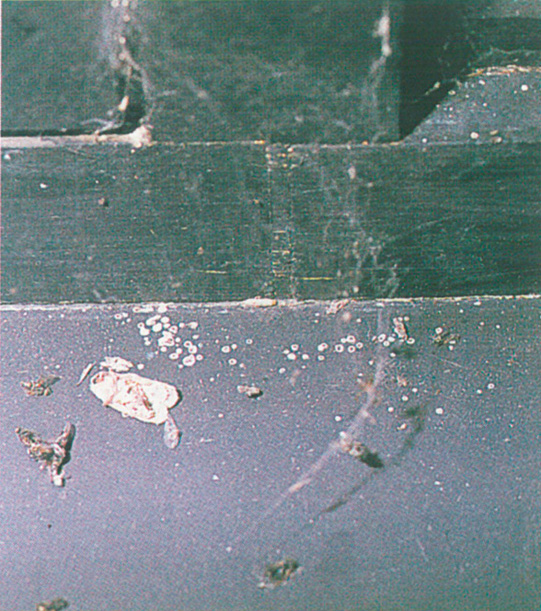
It is not uncommon for the faeces or droppings of animals to be found before the animals themselves are seen. In some cases it will be possible to identify the species that has produced the faeces from their shape, colour and size, and from the conditions under which they were found.
Spider faeces are greyish-white and liquid when deposited, and they occasionally contain the remains of the prey’s integument. They are found particularly under the webs, for example as spots on a window pane or as greyish stripes on walls. The faeces of spiders that live in houses are sometimes found behind pictures and cupboards that are in places where there may also be bed bug faeces, but the latter will be darker.
Bed bugs deposit their black, blood-containing faeces in sheltered places (p. 44). They dry out to round spots which sometimes have a small ‘tail’ (see opposite page). They are extremely resist- ant and therefore very useful as signs to show whether bed bugs are or have been present in a house.
Fleas deposit their faeces as drops of more or less digested blood. They normally produce several such drops while they are sucking, thus leaving small red spots on the skin, clothing or sheets. Flea faeces can be found on the skin of dogs and cats as dark coagulated particles, about the size of a pin’s head.
Louse faeces are firmer than those of fleas and are not absorbed by cloth. They are usually deposited as dark, roundish particles.
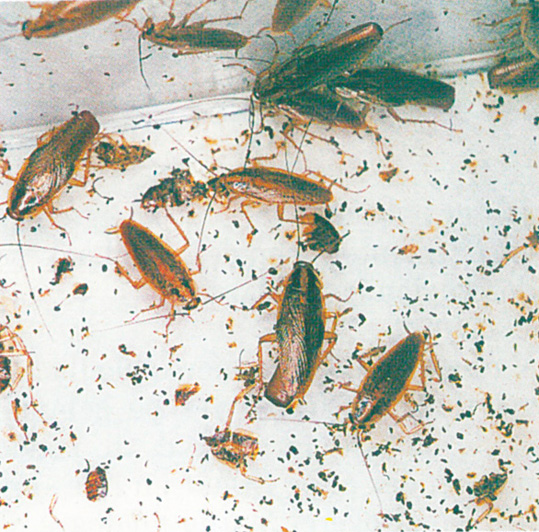
Fly faeces are similar in shape and size to those of bed bugs, but usually somewhat paler. Blood-sucking flies may, however, produce faeces that are almost black. Flies usually deposit their faeces out in the open and often on objects hanging from the ceiling.
Clothes moth larvae produce faeces which can be found together with their silken threads in the places where they have been feeding.
They are almost spherical, and have the same colour as the material on which the larvae have been feeding.
The wood-eating larvae of furniture beetles, house longhorns, etc., deposit their faeces in the tunnels as what is known as frass. The appearance of this material may be a help in identifying the species which has been attacking the timber, but in many cases a microscope will be required to make an accurate identification on the basis of the shape of the faeces.
Cockroach faeces may, in the case of the large species, easily be confused with mouse droppings, although they are usually somewhat smaller. They can be distinguished by the fact that they are marked by longitudinal ridges and their ends are more truncated.
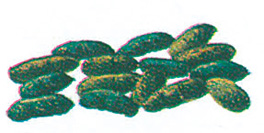
House mouse droppings are cylindrical, and usually 6 mm long and 2.0-2.5 mm across.
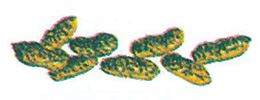
Yellow-necked mouse faeces are relatively short and thick in comparison with those of the house mouse.
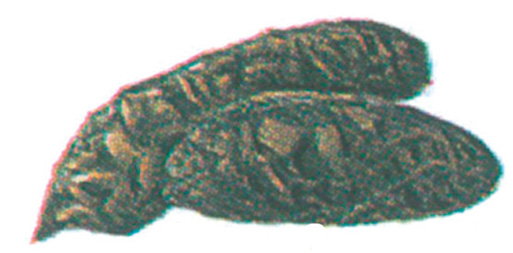
Brown rat droppings are cylindrical, usually with blunt ends, and they are 17 mm long and 6 mm across, but the size varies considerably according to the age of animal. Brown rats have a tendency to use special latrine sites but the droppings may also be found else- where, frequently in a small pile.
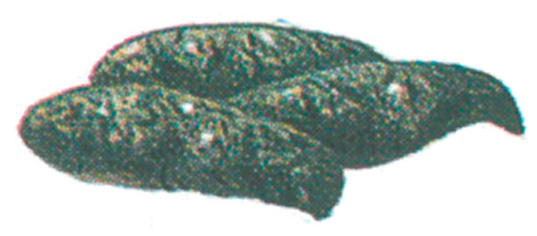
Black rat droppings are shorter and thinner than those of the brown rat, 10 mm long and 2-3 mm across, and often slightly curved and pointed at the ends. It is characteristic of black rats living in a loft that their droppings will be scattered over the whole floor, whereas under the same conditions brown rats leave their droppings in corners or along the walls.

Bat droppings may be rather like those of mice, but they are much more porous, as they consist exclusively of finely divided insect remains. The colour is dark brown to black, and the size varies according to the species. These droppings are often found in large heaps immediately below the animals’ roosts in lofts and cellars.
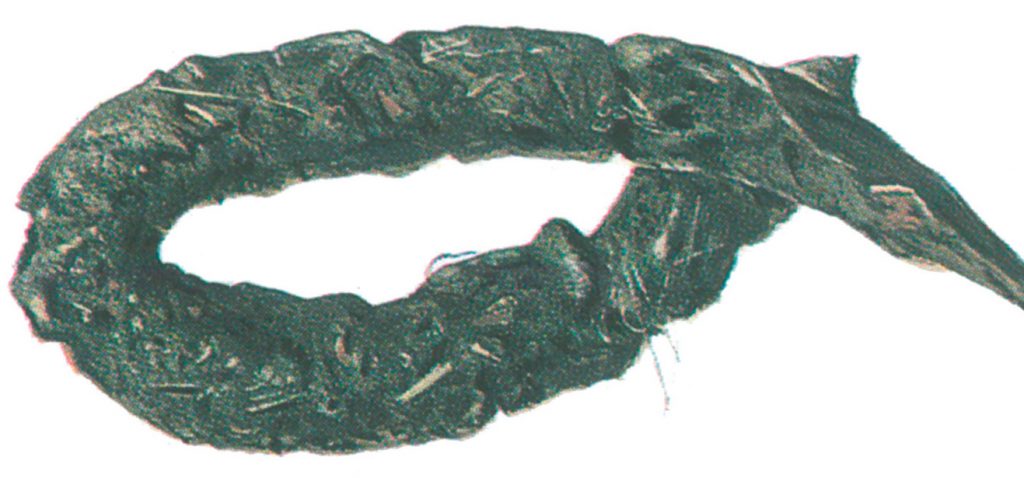
Beech marten faeces are normally 8-10 cm long and 1.2 cm across, cylindrical and usually twisted and drawn out to a point. The colour is dark grey or black (see p. 208). The contents include fur, feathers and bones. These droppings have a strong smell and the animals frequently establish special latrine sites on boxes or similar places, where large amounts of faeces may accumulate.
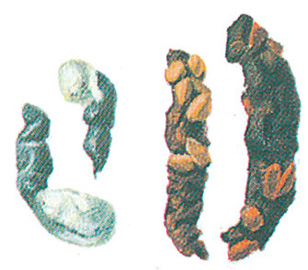
Bird droppings can be recognized by the conspicuous white urine which is deposited together with the faeces.




